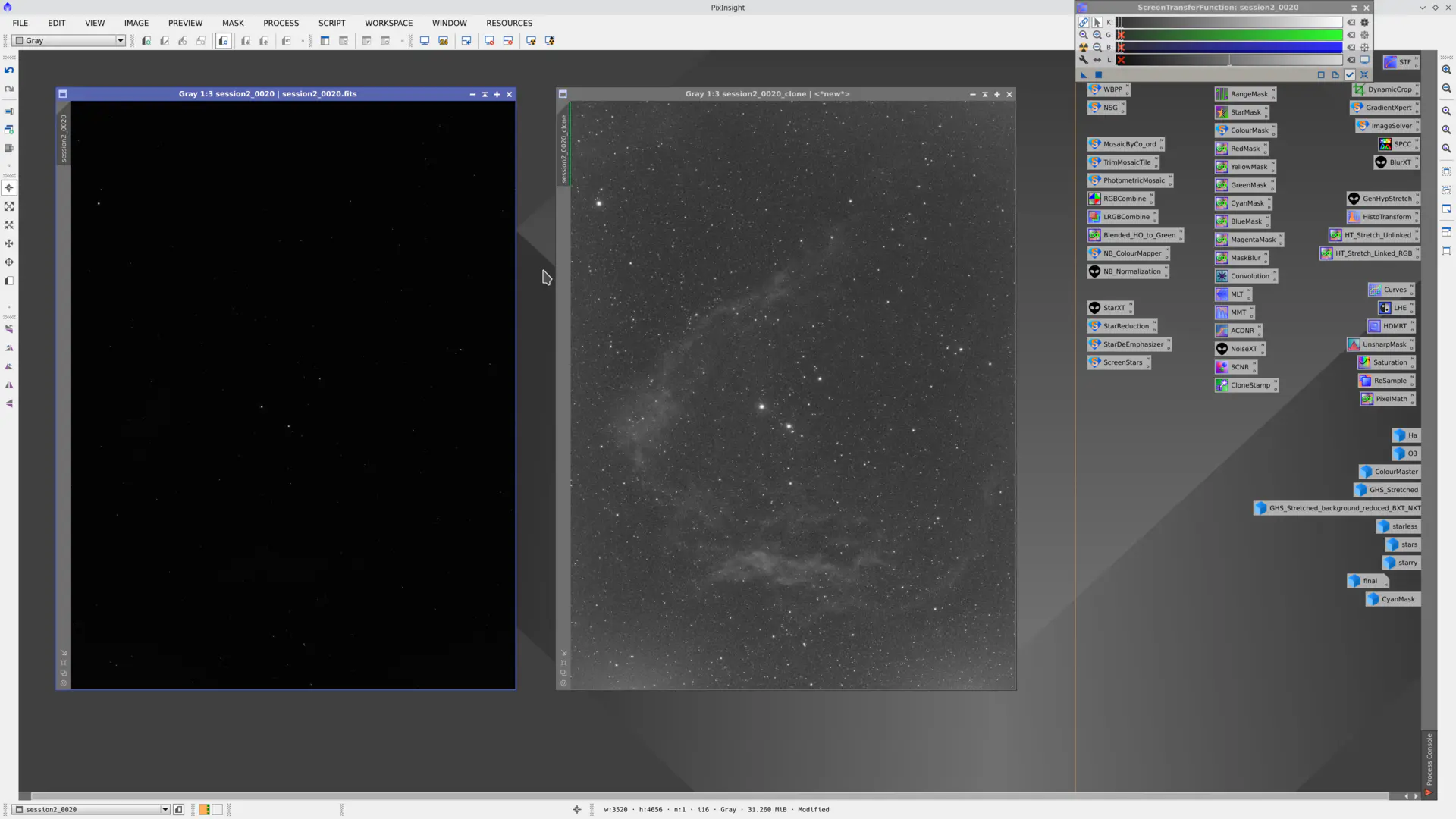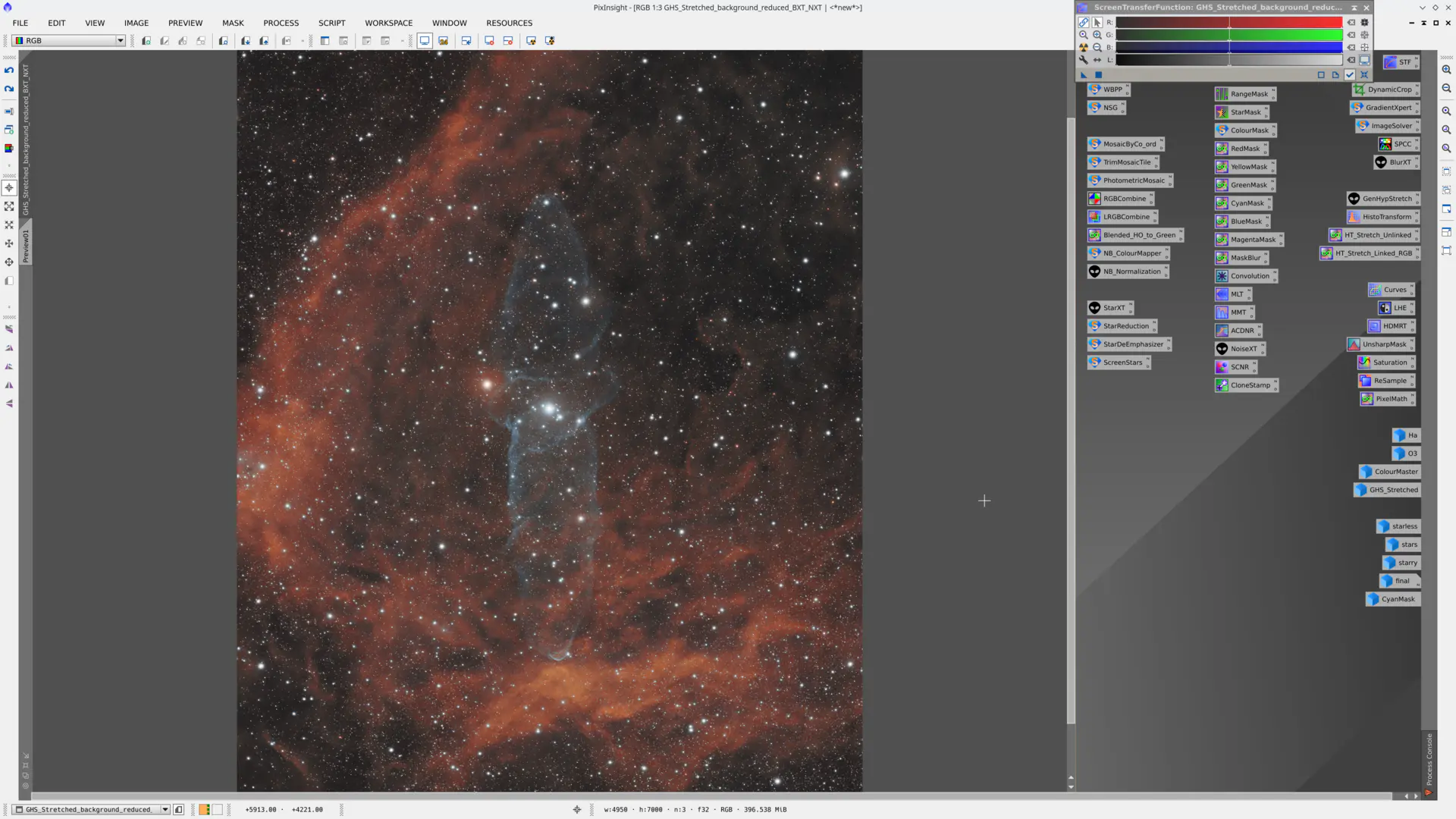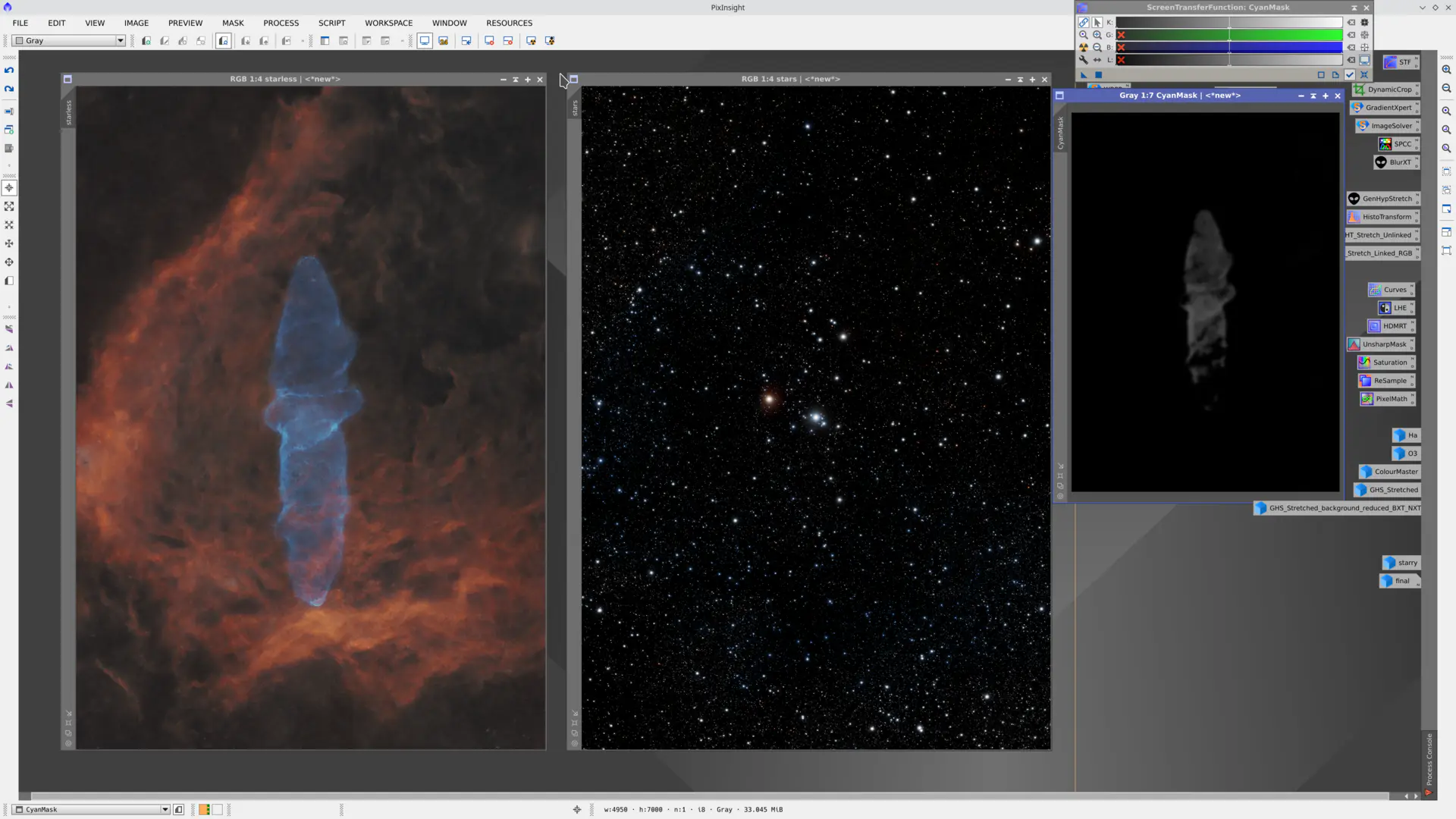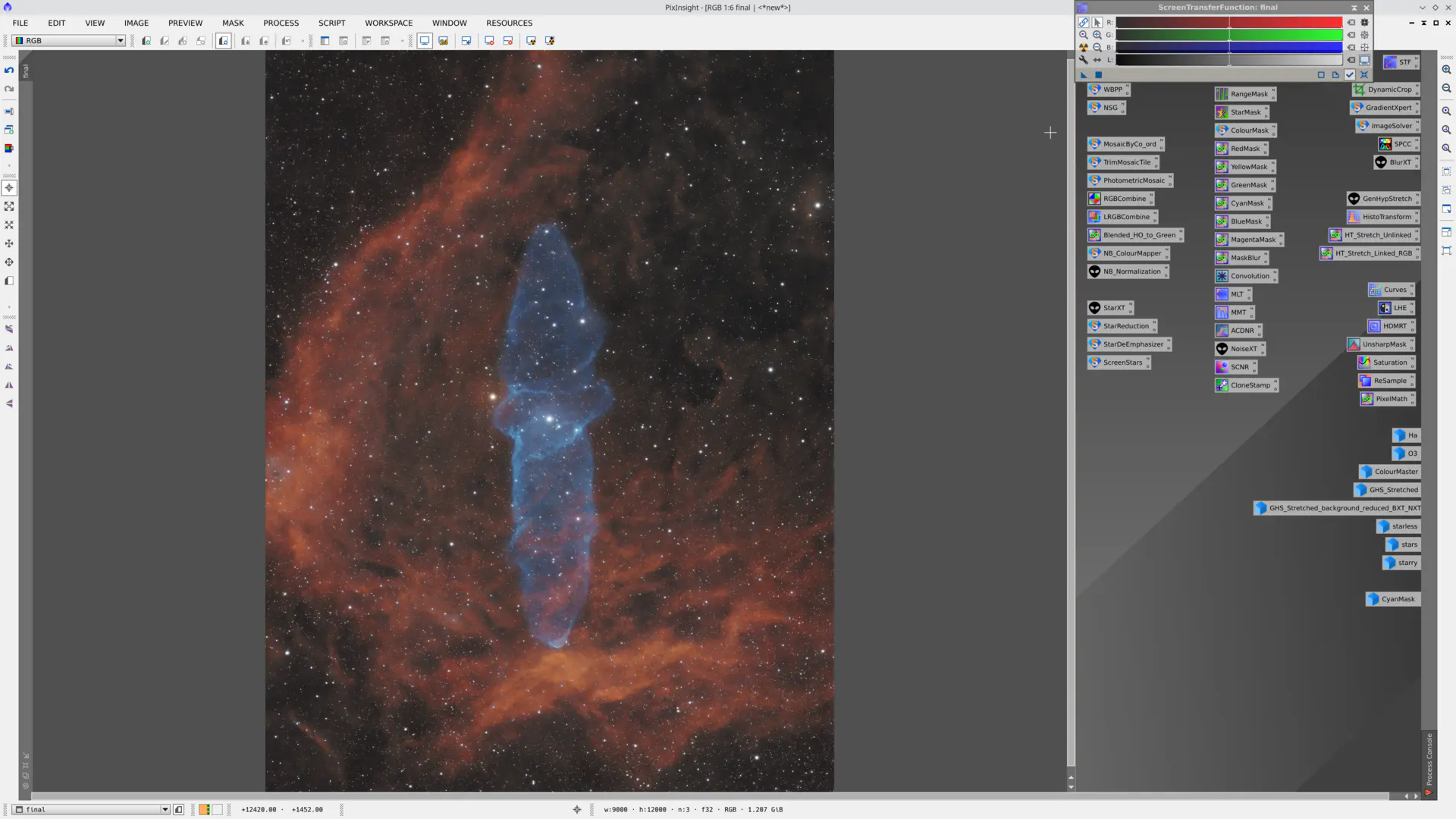BroadlandAstro
How I Capture & Process
This is a high-level tour of how I work — it isn’t a full tutorial; it’s the shape of my workflow so you know what goes into the pictures. I’ve added examples from raw frames to the final image so you can see the progression.
Capture
- Gear: Until 2024 a modest 70 mm f/5 APO quad refractor; more recently a 200 mm f/8 Ritchey-Chrétien. Dedicated mono astro camera on a guided AZ-EQ mount.
- Targets: Chosen for season and altitude. I revisit favourites across years.
- Subs: As many sub-exposures (minutes each) as I can reasonably collect, often over multiple nights, to beat noise and weather.
- I’ll usually spend a night or two testing framing and exposure length before the main imaging runs.
Calibration, stacking & processing
I now exclusively use PixInsight for processing.
- Calibration: Darks, flats and dark flats applied (bias not needed with my camera).
- Registration: Align all subs precisely.
- Integration: Combine to masters; I usually add drizzle integration to improve resolution when sampling allows.
- Linear work: Background neutralisation, gradient removal, noise reduction, deconvolution.
- Channels & colour: Choose palette, fix imperfections, then combine channels. I often run a second round of linear noise reduction to tame any noise introduced by combination. Colour calibration as needed.
- Stretch: Initial stretch from linear to visible image.
- Post-stretch checks: Inspect for artefacts, control/reduce stars, and enhance detail to draw attention to specific regions.
Iteration
Most of my finished gallery pieces are second or third passes of the same data. Skills improve; software improves; so do results. More data always helps.
Note: where a screenshot shows two panels side-by-side, the left is the raw frame; the right is a simple “screen stretch” to visualise faint signal.










